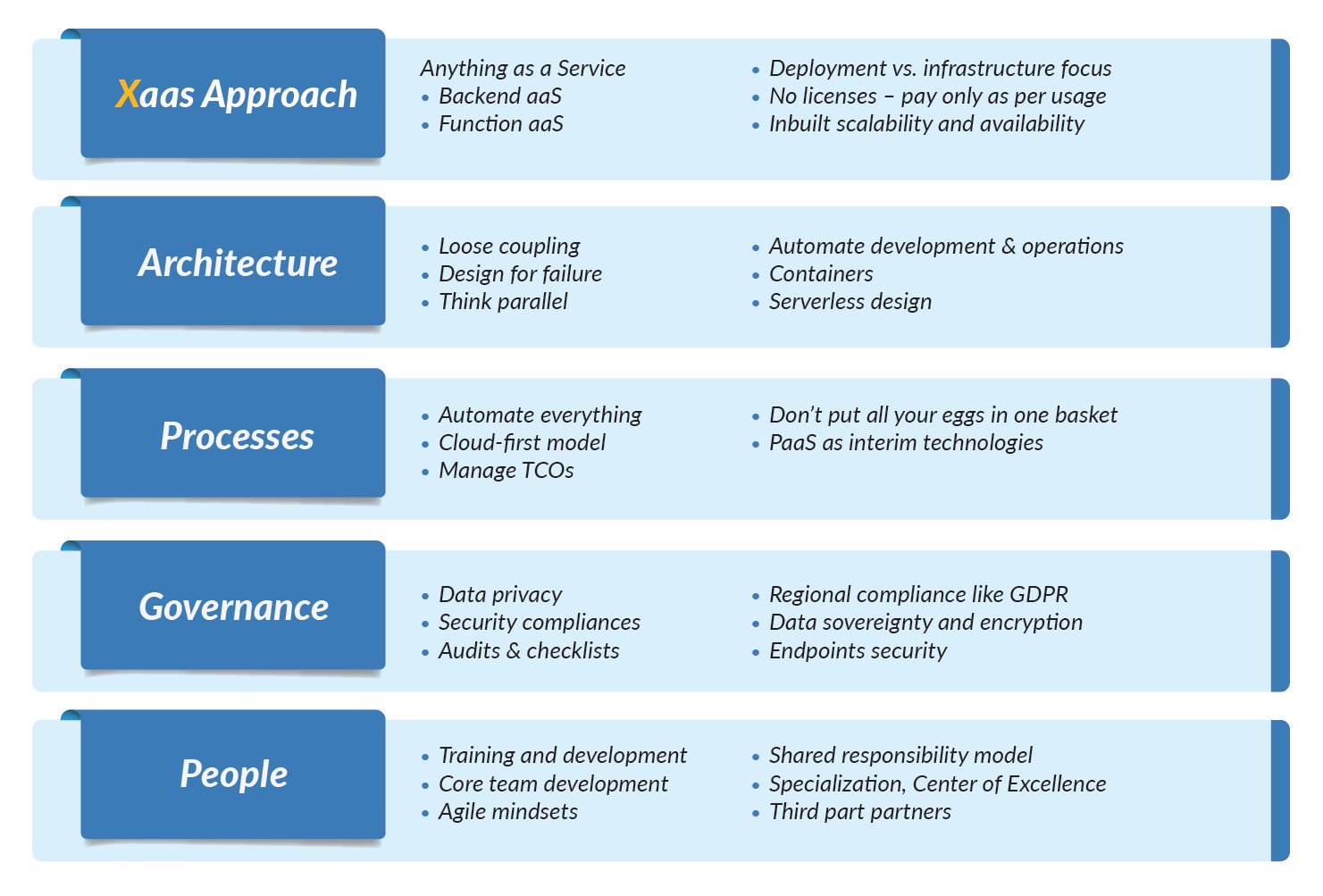 In recent years, the landscape for cloud services has been changing gears to the extent of becoming a disruptive force towards the gross IT expenditure for enterprises. In fact, according to Gartner, by 2020 Cloud Shift will result in more than $1 Trillion in IT spending. Questions like “What is cloud?" and "Why choose it?” are no longer relevant.
In recent years, the landscape for cloud services has been changing gears to the extent of becoming a disruptive force towards the gross IT expenditure for enterprises. In fact, according to Gartner, by 2020 Cloud Shift will result in more than $1 Trillion in IT spending. Questions like “What is cloud?" and "Why choose it?” are no longer relevant.
Enterprises are not just adopting a cloud-first approach, but revamping revenue models by utilizing offerings of various cloud providers through hybrid models. Cloud best practices, maturity models, and checklists are all changing rapidly. Along with these changes, processes, governance, and compliances are bound to change as well.
Let's explore some of these aspects that should be considered while developing cloud adoption models and best practices.
Five factors to consider while developing a cloud adoption strategy

XaaS Approach
X in XaaS stands for anything/everything. The approach signifies the importance of the ever-growing diversity of cloud services. Everything from storage, backend, disaster recovery, and even SaaS falls into this category. This single approach has revolutionized the way things used to work in early days of cloud. This new age is of collaboration and using services built by someone to run a business. Services are key. It helps an enterprise focus on the business and not the underlying technology. Combine together all the services provided by various vendors and you have your new platform.
Enterprises are now able to:
- Pick and choose services from various providers in a single application, exapanding the definition of a hybrid model.
- Plan shorter implementation cycles.
- Pay only for what they choose and not worry about license cost any more.
Architecture
With XaaS and the changing landscape of the cloud, change in the architecture is inevitable. The principles and patterns are demanding improvements. API-first is one of the results of this changing approach. Loose coupling is getting, even more emphasis and microservices are becoming the de-facto norm. Modern-day architecture uses technologies like serverless design, Containers as a Service (CaaS), and hyper-converged infrastructure. Together, these approaches make SaaS solutions more scalable as well as reduce operations and development time.
The shift has brought the following benefits:
- Automation in development and operations resulting in reduced time to market.
- Being parallel is not just about programming anymore, it’s driving the architecture and design of the system.
- Serverless designs are more mainstream.
- Managing integrated technologies is easier.
- Leveraging integrated storage resources better.
Process
Enterprises are no longer restricted to a single provider. Shifting the total cost of ownership and reducing IT infrastructure management headaches have led to significant changes in process definitions. Infrastructure as a Service (IaaS) is not the first choice anymore.
For enterprises, this means:
- Business and functional aspects need more focus rather than infrastructure or system administration.
- Automation is not just for development or operations, but considered as the backbone of business processes.
- New revenue models can be devised now that there is a shift towards business rather than operations.
Governance
With new avenues opening, traditional governance models are becoming obsolete. Data is flowing at an exponential rate and the boundaries are overlapping. Security, sovereignty, and privacy of enterprises and individuals are at a higher risk. Organizations and government bodies have upped the ante on overall policies and standards. New rules and regulations like GDPR to strengthen and unify data protection are being introduced.
This means:
- Compliances, standards and risk management need consistent redefinition.
- Audits and security checks become more critical.
- Continuous assessment of cloud service providers on parameters such as data center security, network security, and regulatory standards.
- Preparation of responsibility and accountability matrix and one-stop shop rulebook.
- Laying out strict policies to ensure data recovery and availability.
- Considering third-party assessments in case there is lack of expertise or increasing load on the security team.
People
People are as important as any other factor in this ever-changing model. If the mindset of the people implementing doesn’t change, none of it is possible. In fact, lack of trained resources is one of the biggest hinderances towards cloud adoption. Lack of expert resource is also the reason behind data security and privacy issues.
Therefore, enterprises should:
- Train and educate their staff on new technologies and their usage.
- Build a core team with a shared responsibility model.
- Incorporate agility in the team's thought process.
- Welcome third-party partners wherever required.
The cloud adoption strategy and best practices model should be a living document. It’s a model where decision parameters as well as the outcomes will vary with time and technology. Therefore, both cloud providers and consumers need to consider the five-floor model very closely to stay ahead in the game.
Amit Chopra





